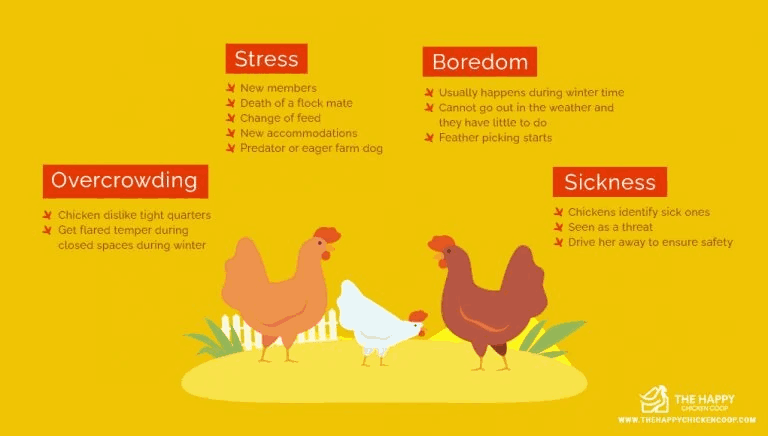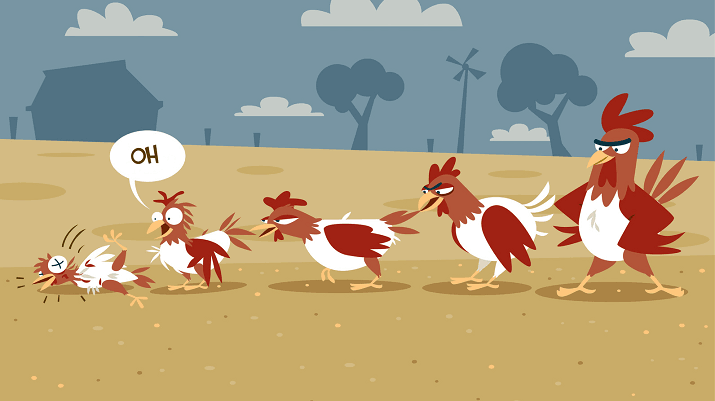Key Takeaways:
- An ornery chicken is one that displays aggressive, feisty, or difficult behavior, which can disrupt flock harmony and pose challenges for keepers.
- Genetics, environment, hormones, and health all contribute to ornery chicken behavior.
- Certain breeds are more prone to aggression, while others are known for their docility.
- Effective management includes proper handling, environmental enrichment, and, when necessary, isolation or removal of aggressive birds.
- Aggressive chickens can impact both small-scale and commercial poultry operations, affecting productivity, safety, and profitability.
Introduction
Have you ever found yourself dodging a peck or a sudden charge from a chicken in your backyard flock? If so, you’ve likely encountered what many poultry keepers call an “ornery chicken.” Chickens, one of the world’s most common domesticated animals, play a vital role in agriculture and households across the United States and beyond. While most chickens are docile and easy to manage, some develop ornery or aggressive tendencies that can disrupt the peace of the coop and challenge even the most experienced keepers.
Understanding ornery chicken behavior is crucial for anyone raising poultry, whether you’re a backyard hobbyist or a commercial farmer. Recognizing the signs, knowing the causes, and learning effective management strategies can make the difference between a harmonious flock and a daily struggle. In this comprehensive guide, we’ll explore what makes a chicken ornery, the breeds most likely to display this behavior, and practical tips for taming and managing aggressive birds. By the end, you’ll be equipped to handle even the feistiest members of your flock with confidence.
1. What is an Ornery Chicken?
Defining Ornery Chicken Behavior
An ornery chicken is one that exhibits a stubborn, aggressive, or difficult temperament. In poultry terms, “ornery” often refers to birds that are not just establishing their place in the pecking order but are persistently aggressive, challenging both other chickens and humans. This can include pecking, chasing, puffing up, and even launching physical attacks .
Common Signs of Ornery Behavior
- Pecking and Attacking: Ornery chickens may peck at other birds or humans, sometimes drawing blood or causing injury.
- Puffing Up and Posturing: Aggressive chickens often puff up their feathers, stand tall, and make themselves look larger to intimidate others.
- Flighty or Defensive Actions: Quick, unpredictable movements and a tendency to flee or attack when approached.
- Challenging Flock Hierarchy: Repeatedly confronting or fighting with other chickens, even after the pecking order is established .
Ornery vs. Normal Pecking Order
All chickens establish a social hierarchy known as the pecking order. This involves some pecking and minor skirmishes but is generally non-lethal and helps maintain order. An ornery chicken, however, goes beyond this, displaying persistent aggression that can lead to injuries and disrupt flock harmony .
Real-World Examples
Backyard chicken keepers often share stories of ornery chickens. For instance, one keeper recounted how a rooster named Pewter became so aggressive that he had to be re-homed to a larger flock, where his behavior was less problematic. Another story involved a hen named Blondie, who was so ornery she pecked at the calves of her keepers, leading them to consider removing her from the flock .
2. Causes and Contributing Factors of Ornery Behavior
Genetic Predisposition
Some chickens are simply born with a more aggressive temperament. Breeds like Old English Game, Cubalaya, and Rhode Island Red are known for their feisty nature, a trait often linked to their historical use in cockfighting or as protective flock leaders .
Environmental Stress Factors
- Overcrowding: Too many chickens in a small space can lead to competition and stress, increasing aggression.
- Lack of Enrichment: Chickens are intelligent and active; boredom can lead to pecking and fighting.
- Competition for Resources: Limited access to food, water, or nesting boxes can spark aggressive behavior .
Hormonal Influence
Aggression often increases with age and sexual maturity, especially in roosters. Hormonal surges can make birds more territorial and protective, leading to more frequent displays of ornery behavior .
Health Issues
Pain, illness, or discomfort can cause chickens to become defensive or aggressive. A bird that is unwell may lash out as a form of self-protection.
Flock Dynamics and Personality
Every flock has its own social structure, and individual personalities play a significant role. Some chickens are naturally more dominant, while others are submissive. Disruptions, such as introducing new birds, can temporarily increase aggression as the pecking order is re-established.
3. Breeds Known for Ornery or Aggressive Tendencies
Aggressive Breeds
Certain breeds are more likely to produce ornery chickens due to their genetic background:
- Aseel: Known for their fighting ability and strong-willed nature.
- Buckeye: Can be assertive, especially in mixed flocks.
- Cornish: Sometimes aggressive, particularly in confined spaces.
- Old English Game: Historically bred for cockfighting, highly aggressive.
- Rhode Island Red: Productive but can be territorial and feisty.
- Shamo: Large, powerful, and often combative.
- Sumatra: Active and sometimes flighty or aggressive.
- Wyandotte: While generally docile, some lines can be assertive .
Docile Breeds for Balance
On the other hand, breeds like Orpingtons, Anconas, Silkies, and Australorps are celebrated for their calm and friendly demeanor, making them ideal for families and novice keepers .
Why Some Breeds Are More Aggressive
Aggression in certain breeds is often a result of selective breeding for traits like protection, fighting ability, or assertiveness. While these traits can be beneficial in some contexts (e.g., predator defense), they can also make flock management more challenging.
Impact on Production
Aggressive chickens can negatively affect meat and egg production by causing stress, injuries, and even death among flock members. This can reduce overall productivity and profitability.
4. Managing and Taming Ornery Chickens
Best Practices for Management
Whether you’re dealing with a single ornery chicken or a flock with multiple aggressive birds, effective management is key.
Handling Routines
- Gentle, Regular Handling: Socialize chickens from a young age with calm, consistent handling to reduce fear and aggression.
- Avoid Sudden Movements: Move slowly and speak softly to avoid startling birds.
Environmental Enrichment
- Provide Space: Ensure adequate room in the coop and run to minimize competition.
- Add Perches and Dust Baths: These allow chickens to engage in natural behaviors and reduce boredom.
- Offer Entertainment: Hang vegetables, scatter scratch grains, or provide hay piles for foraging .
Adjusting Feeding and Water Access
- Multiple Feeders and Waterers: Reduce competition by providing several feeding and watering stations.
- Monitor for Bullying: Watch for birds being excluded from resources and intervene if necessary.
Isolation and Removal
- Temporary Isolation: If a chicken becomes excessively aggressive, isolate it for a few days before reintroducing it to the flock. This can help reset its behavior.
- Permanent Removal: In severe cases, it may be necessary to re-home or cull an ornery chicken for the safety of the flock .
Safety Tips for Keepers
- Protective Gear: Wear gloves, long sleeves, and boots when handling aggressive birds.
- Use Barriers: A broom or board can help keep a safe distance from a charging rooster.
- Stay Calm: Never respond to aggression with aggression; remain calm and assertive.
Behavioral Modification
- Training Attempts: Some keepers have success with positive reinforcement, rewarding calm behavior with treats.
- Pinless Peepers: These plastic blinders can prevent aggressive birds from targeting others.
- Beak Trimming: A controversial practice, beak trimming can reduce injury but is generally avoided in small flocks with proper management.
Real-World Stories
Chicken keepers often share their experiences with ornery birds. One keeper described how regular, gentle handling helped tame a previously aggressive rooster, while another found that providing more space and enrichment reduced pecking and fighting .
5. Benefits and Challenges of Keeping Ornery Chickens
Benefits
- Flock Protection: Ornery chickens, especially roosters, can be effective at deterring predators and alerting the flock to danger.
- Vigilance: Their assertiveness can help maintain order and discipline within the flock.
Challenges
- Flock Management: Aggressive birds can injure others, leading to stress, reduced productivity, and even death.
- Human Interaction: Ornery chickens can be difficult to handle, posing a risk to keepers, especially children.
- Safety Concerns: Persistent aggression may require removal or special management, increasing labor and costs .
Weighing the Pros and Cons
When deciding whether to keep an ornery chicken, consider your goals. If you value a peaceful flock and easy handling, docile breeds may be preferable. However, if predator protection is a priority, a more assertive bird might be beneficial.
6. The Economic and Business Impact of Aggressive Chickens
Impact on Efficiency and Safety
Aggressive chickens can disrupt flock harmony, leading to injuries, stress, and reduced egg or meat production. This affects the overall efficiency and profitability of poultry operations.

Costs of Management
- Injury Treatment: Veterinary care for injured birds increases costs.
- Labor: Managing aggressive birds requires more time and resources.
- Loss of Birds: Severe aggression can lead to death or the need to cull valuable birds.
Breed Selection and Business Decisions
Commercial poultry businesses must consider temperament when selecting breeds. Aggressive birds may require more robust management systems, while docile breeds can improve worker safety and reduce losses .
Consumer Perceptions
Consumers increasingly value animal welfare. Flocks with high aggression may be viewed negatively, affecting marketability and brand reputation. Conversely, well-managed, calm flocks can enhance product quality and consumer trust.
Conclusion
Understanding the ornery chicken is essential for anyone involved in poultry keeping, from backyard enthusiasts to commercial farmers. Recognizing the signs of ornery behavior, knowing the breeds most likely to display it, and implementing effective management strategies can help maintain a healthy, productive, and harmonious flock. While ornery chickens can offer benefits like increased vigilance and predator protection, they also present challenges that require careful consideration and proactive management.
By observing your flock, adapting your strategies, and choosing breeds wisely, you can minimize the risks associated with aggressive chickens and ensure the safety and well-being of both your birds and yourself. Have you dealt with an ornery chicken in your flock? Share your experiences or questions in the comments below—your insights could help fellow poultry keepers find solutions to their own challenges.
For more, visit our website, S-Ornery home.com
